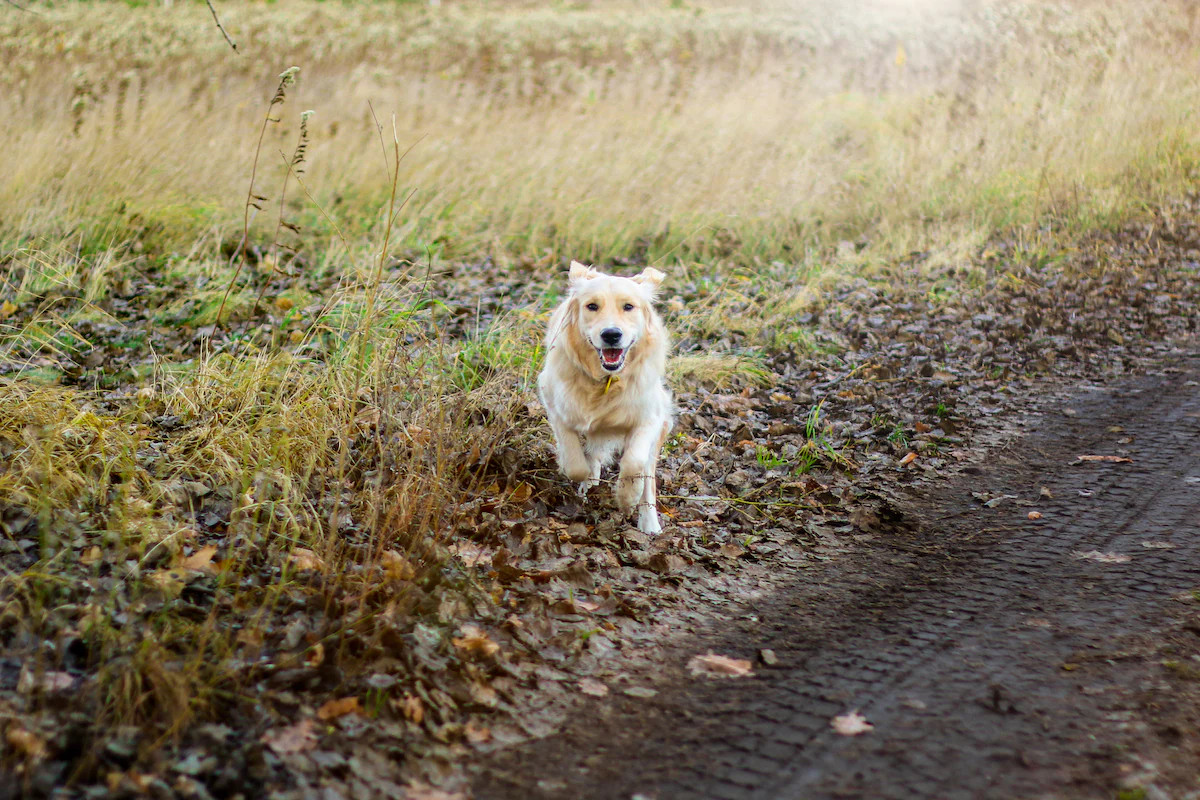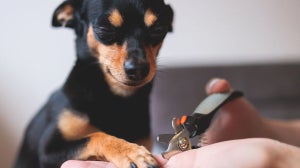
Puppies grow up so quickly - a little too quickly, some of us may say! One minute they’re an adorable ball of fluff and the next they’re a full-size canine. But when do dogs stop growing and what kind of growth milestones should you expect a puppy to reach in their journey to becoming a fully-grown adult pooch?
In this article, we’ll answer questions including when will my dog stop growing and how quickly, while also providing a puppy development stages chart that covers a timeline of the various stages of puppy development, such as teething, weight gain and puppy puberty. Of course, things vary from breed to breed, so we’ll also discuss how puppy growth can differ between smaller and larger dogs. A great dane has a lot more growing to do than a chihuahua, after all!
When do dogs stop growing?
The answer to when dogs stop growing isn’t clear cut, as factors such as their breed, sex, genes and diet can come into play. Technically speaking, dogs are considered an adult by the time they are a year old, but it can take anywhere between 6 and 24 months for a dog to stop growing in height.
Different breeds mature at different rates, with smaller dogs reaching adulthood much faster than big dogs. Male dogs are also likely to take slightly longer to reach their full growth than females, as they tend to be taller.
A puppy’s growth can also be impacted by their overall health and the nutrition they are getting. To keep them on track to becoming a big strong pooch, puppies need a diet full of essential minerals and protein, which can be found in their mother’s milk and specially formulated puppy food.
All this said, even when dogs stop growing in height, they will still continue to develop muscle and fat that can lead to them ‘filling out’. They’re also still maturing in other ways and are likely to keep their cheeky puppy demeanour for some time after reaching full size!
How do puppies grow?
Puppies grow in spurts, which means they’ll go through a period where they grow quickly, before entering a period where this slows down - and so on and so forth. This might be why it feels like they double in size in the blink of an eye!
A large part of this growth happens very early in life. In fact, newborn puppies will double their birth weight within their first week of life and then will generally grow about 5-10% per day from the age of 1 week to 8 weeks old. After this, their growth rate slows down until they reach their full size.
Dogs also go through a series of puppy developmental stages that include their eyes and ears opening, learning to walk, weaning, teething and socialisation.
Puppy Growth Chart
For a more detailed idea of the rate you can expect your puppy to grow and develop at, the puppy development stages chart below offers a rough timeline. So if you’re wondering when dogs stop growing in height or when they’ll have their adult teeth, take a look.
| Age | Developmental stage | Notable developments | Growth |
|---|---|---|---|
| Birth-2 weeks | Neonatal |
|
They’re 1-5% of their expected adult weight |
| 2-4 weeks | Transitional |
|
Gaining 5-10% more body mass daily |
| 4-12 weeks | Socialisation |
|
Gaining 5-10% more body mass daily until 8 weeks |
| 8-12 weeks | Juvenile |
|
Growth spurts |
| 3-6 months | Ranking |
|
% of full size at 6 months:
|
| 6-18 months | Adolescence |
|
% of full size at 9 months:
|
| 1-2 years | Social maturity |
|
Age at which at full size:
|
Puppy Growth Factors
Puppy growth times vary a lot from dog to dog, so if you’re wondering to yourself ‘when will my dog stop growing?’, the answer isn’t one size fits all. There are a few factors that can impact how quickly they reach their full adult size, which you can read about below.
Breed size
Some small breeds (like toy poodles) can reach their full adult size in as little as 6 to 8 months, while medium breeds (like border collies), are more likely to take around a year and large breeds (like mastiffs), can take between 18 and 24 months. This is because larger breeds have much bigger bones and joints that need a bit more time to grow and develop.
Early care & weaning puppies
Puppies need a lot of care when they’re newborns, and to have the best chance at healthy development, will require their mother’s milk or a suitable milk replacer every two hours. These furry babies also depend on their mother and littermates for warmth. From around 4 weeks old, the puppy can be slowly weaned from its mother’s milk in place of solid food and be a little more independent.
Diet & nutrition
If a puppy isn’t getting the right nutrition, this could negatively impact or slow down their growth. To keep them healthy and on the right path after weaning, they will need a diet that is high in protein and minerals, which can be found in specially formulated puppy food. Ask your vet for their advice on the best food option for your puppy and how much to feed them to support their growth.
Signs of puppies growth
You can tell that your puppy is growing by having a look at their teeth, ears and paws, as these will all go through significant changes in their puppyhood.
Eruption and loss of teeth
A dog’s puppy teeth will start to come through at around 3-4 weeks old. They start out life with a set of 28 puppy teeth, which will then fall out and be replaced by 42 adult teeth by the time they are around 6 months old.
The size and shape of their ears
A puppy comes into the world with their ears sealed shut, which are expected to open at around 2 weeks old. The outside part of their ears is also yet to form at this point and will eventually grow and find its shape over the coming weeks and months. If they’re a breed prone to having ears that stand up, you can expect this to happen at around 5 to 6 months.
The size of their paws
A puppy’s paws gradually increase in size as they grow and you’ll probably notice a big difference at around 4-6 months old. If your puppy's feet look like they are too big for their body, then they likely have more growth spurts left in them.
Support your growing puppy's needs
While your puppy’s growth will hopefully come naturally if they are in good health, there are a few things you can do to encourage healthy development of their bones and muscles, from providing them with the right diet to getting them up and about on their paws.
Puppy Food
It’s important to feed your pup quality puppy food that is high in protein and essential nutrients that will help them grow up healthy and strong. Ask your vet for advice on what to feed them and for portion guidelines so your pooch doesn’t become overweight (you can read more about how much to feed your puppy in our article). As their teeth come through, you can also give them puppy chews to encourage healthy development of their gnashers.
Puppy Exercise
Puppies are little bundles of energy and regular exercise will help them to build and maintain strong bones and muscles. Make sure they have the opportunity to have a run and play, whether this be around the home, in the garden or on a walk. This said, it’s important to make sure they don’t do anything too strenuous or exercise for too long during their early growth to avoid trauma. For ideas about how to exercise your pup, read our article on puppy exercise and games.
It’s not recommended that you let your puppy go outside for walks until they have had both rounds of vaccinations (usually at around 10-12 weeks). After this, a general guide to follow is to walk them for 5 minutes for every month old they are, so a 4 month old puppy can go on walks of 20 minutes. Before walking them outside, you should keep them mentally stimulated and socialised at home.
Puppy Veterinary Care
Young pups are vulnerable in their early days, so will need veterinary care for general health checks, as well as to have preventative treatments (such as deworming and flea prevention) and vaccinations against common canine diseases. Puppies are typically vaccinated at 8-10 weeks with the second dose usually being given 2-4 weeks later.
Puppy Socialising
A pup’s development isn’t purely physical, they also need appropriate socialisation to help them to grow into a calm and loving pooch that is comfortable in various environments. This is the most important period, as early experiences will have a big role in shaping their personality and potential behavioural problems. By peacefully introducing them to people, children, other dogs, certain objects and noises in their first four months, they will hopefully be more comfortable in later interactions. This exposure paired with dog training will help them to develop good social skills.
Puppy Growth FAQs
At what age is a dog fully grown?
Dogs are considered to be adults at 1 year old, but it can take between 6 and 24 months for them to grow to their full size. Larger breeds will generally take longer to reach full maturity compared to smaller breeds because it takes longer for their bones and joints to develop.
How can you tell how big a dog will get?
Good indicators of how big a puppy will get are the parents and breed. If you’ve got a purebred pup, breed averages and your pet’s sex can help build a rough idea. Predicting a mixed breed pup’s size is a little more tricky. A general rule of thumb (though not foolproof) is to multiply their weight at 4 months old by 4.
Do dogs paws determine size?
While a puppy’s paws aren’t an exact measure of how large they will become, the size of their paws in proportion to their body can indicate future growth spurts. If your puppy's feet look unusually large for them, they probably have more growing to do!
Watching your pup grow up into a fully grown adult pooch is a beautiful thing. And by giving them lots of care and support, and feeding them healthy puppy food that supplies them with all the nutrients they need for their development, they’ll grow into the happy and healthy dog they deserve to be.

Related Articles








